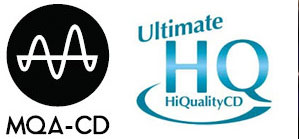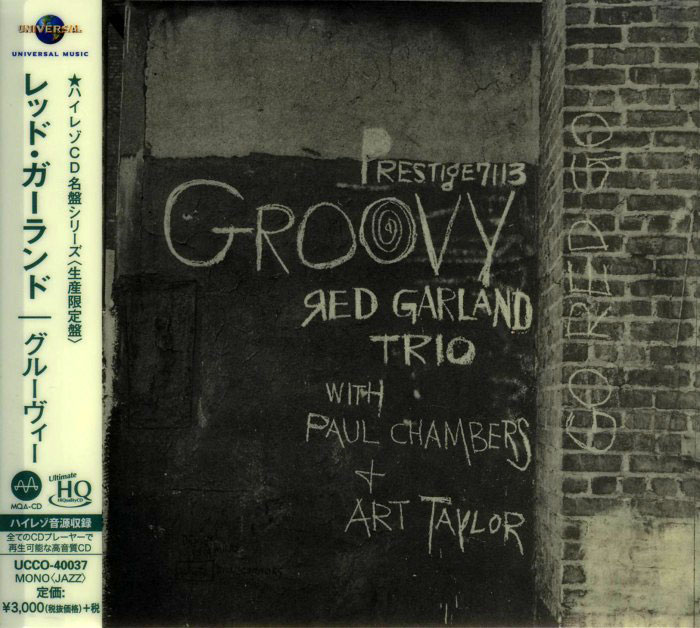Logowanie
Mikołaj - ten to ma gest!
Miles Davis, Horace Silver, Jay Jay Johnson, Percy Heath, Kenny Clarke, Lucky Thompson
Walkin'
20bit K2Super Coding - ale jak to brzmi!
Kasety magnetofonowe
Winylowy niezbędnik
ClearAudio
Double Matrix Professional - Sonic
najbardziej inteligentna i skuteczna pralka do płyt winylowych wszelkiego typu - całkowicie automatyczna
Red Garland Trio
Groovy
UHQCD - dotknij Oryginału - MQA (Master Quality Authenticated)
Red Garland's third recording as a leader has him playing very well, somewhat energetic and more inclusive in his direction to span the mainstream jazz palate beyond the cool exterior he emanates. The title might be a bit deceptive, for this is not a project where soul-jazz or early boogaloo influences turned jazzmen into groovemeisters -- it's a swinging groove. With bassist Paul Chambers and drummer Art Taylor, Garland has all the support he needs to wing it in a variety of directions. Recorded in that most legendary year of jazz, 1957, Garland is coming into his own in a more confident way, buoyed by his association at the time with Miles Davis. Chambers is flawless in his support role, and on this recording deserves a close listen, especially for students of the acoustic upright. They immediately dig in on the opener "C Jam Blues," with Garland at his heartiest during his bridge solo, they agree in the affirmative during the entirety of the hard bop take of "Will You Still Be Mine?," and repeat but modify the melody ŕ la "Cool Blues" in an adept display of artistry for "Hey Now." Of course Garland has to play a ballad or two, as on "Willow Weep for Me," luscious with chord sequences, and really reflects the influence of Erroll Garner in that chiming, two-handed sustenato style for Garner's "Gone Again." It is said that by the third recording, most musicians should have their style down pat and begin attempting to take the music to a higher level. You really hear that in this recording, which was a springboard to making Red Garland one of the most revered and respected jazz pianists of the modern era. ~ Michael G. Nastos
 UHQCD oznacza Ultimate High Quality Compact Disc. Najnowszy (lipiec 2018) materiał chroniący warstwę nośną płyt kompaktowych, opracowany przez specjalistów z Japonii i Hong Kongu. Na krążki tych płyt nanoszona jest cienka warstwa z monomerów oraz wypełniacza. Warstwa ta nie stanowi bariery dla światła lasera. Promień lasera jakby nie dostrzega owej warstwy ‘fotopolimeru’, a więc nie ulega rozproszeniu, załamaniu, odbiciu. Promień sięga po czysty sygnał i w takiej, nieskazitelnej postaci wraca z nim do źródła. Zdaniem specjalistów – to najwierniejszy z dotychczasowych sposobów na przeniesienie analogowych walorów taśmy matki na płytę CD.
Dziś.
Płyty UHQCD są dodatkowo kodowane jako MQA (Master Quality Authenticated). Wystarczy wyprowadzić sygnał cyfrowy z cyfrowego wyjścia odtwarzacza CD lub wcześniej zgranego strumienia danych z serwera muzycznego i podać go do odpowiedniego konwertera MQA DA by wygenerować z danych umieszczonych na tej CD 24-bitowy sygnał z częstotliwością próbkowania do 352 kHz.
Do wyprodukowania limitowanej serii płyt UHQCD wykorzystano dane DSD z jednowarstwowych płyt SACD (One Layer), wydanych przez Universal Japan w poprzednich latach. Wydania te stanowią szczytowe osiągnięcie fonograficzne ostatnich lat. Niestety, dostępne wyłącznie dla posiadaczy odtwarzaczy SACD. Płyty UHQCD są idealnym rozwiązaniem dla melomanów, którzy nie mają playerów SACD, a chcieliby delektować się jakością legendarnych już japońskich SACD One Layer.
Płyty UHQCD - w naszej ofercie
UHQCD oznacza Ultimate High Quality Compact Disc. Najnowszy (lipiec 2018) materiał chroniący warstwę nośną płyt kompaktowych, opracowany przez specjalistów z Japonii i Hong Kongu. Na krążki tych płyt nanoszona jest cienka warstwa z monomerów oraz wypełniacza. Warstwa ta nie stanowi bariery dla światła lasera. Promień lasera jakby nie dostrzega owej warstwy ‘fotopolimeru’, a więc nie ulega rozproszeniu, załamaniu, odbiciu. Promień sięga po czysty sygnał i w takiej, nieskazitelnej postaci wraca z nim do źródła. Zdaniem specjalistów – to najwierniejszy z dotychczasowych sposobów na przeniesienie analogowych walorów taśmy matki na płytę CD.
Dziś.
Płyty UHQCD są dodatkowo kodowane jako MQA (Master Quality Authenticated). Wystarczy wyprowadzić sygnał cyfrowy z cyfrowego wyjścia odtwarzacza CD lub wcześniej zgranego strumienia danych z serwera muzycznego i podać go do odpowiedniego konwertera MQA DA by wygenerować z danych umieszczonych na tej CD 24-bitowy sygnał z częstotliwością próbkowania do 352 kHz.
Do wyprodukowania limitowanej serii płyt UHQCD wykorzystano dane DSD z jednowarstwowych płyt SACD (One Layer), wydanych przez Universal Japan w poprzednich latach. Wydania te stanowią szczytowe osiągnięcie fonograficzne ostatnich lat. Niestety, dostępne wyłącznie dla posiadaczy odtwarzaczy SACD. Płyty UHQCD są idealnym rozwiązaniem dla melomanów, którzy nie mają playerów SACD, a chcieliby delektować się jakością legendarnych już japońskich SACD One Layer.
Płyty UHQCD - w naszej ofercie






























